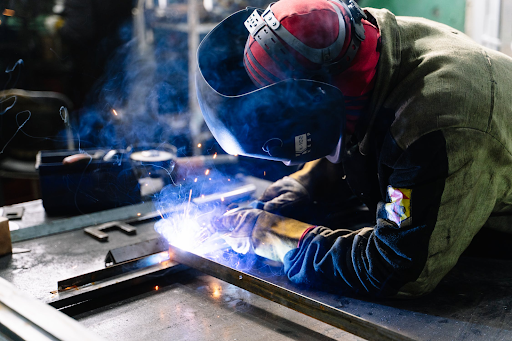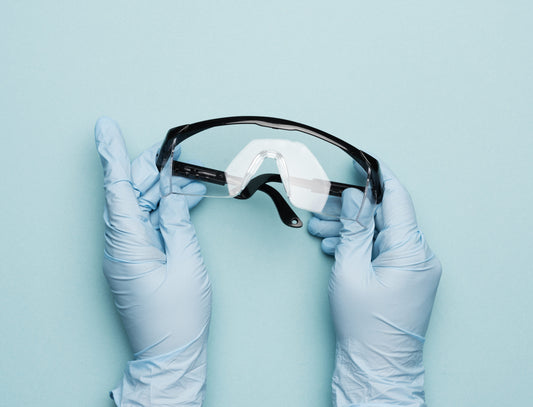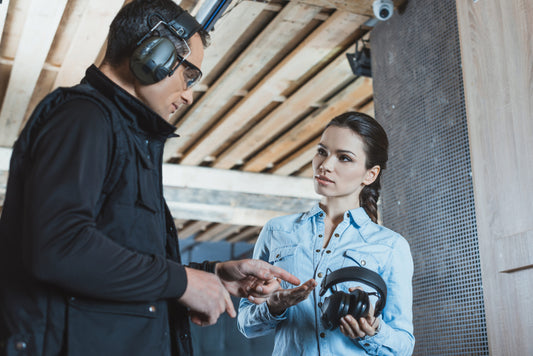
How To Choose A Welding Helmet
The importance of adhering to safety rules and regulations in any workplace or workshop setting cannot be overemphasized. No one needs to be told that neglecting the necessary safety precautions in a workshop is a recipe for disaster; the equipment might get damaged or we might cause harm to ourselves. A common safety precaution you’ll see people wearing in a workshop is personal protective equipment (PPE).
The helmet is a good example of common PPE in the welding workshop. The importance of PPE in welding is primarily for protection against sparks, slags, etc. The helmet also protects the eyes from ultraviolet and infrared rays, which are capable of causing vision problems.
Choosing a welding helmet can be a very rewarding, yet seemingly overwhelming process. The wide variety of helmets available and all the different combinations of features can often seem daunting.
In this article, we’ll break down the 5 most important factors you should consider best welding helmet for beginners in your situation. Welding helmets typically include two different types; passive and auto-darkening. The passive type enables lifting and lowering of the shield without having to remove the whole helmet while auto-darkening ones can detect arc flashes. This allows the lens to adjust (darken) accordingly.
5 Factors To Consider When Choosing A Welding Helmet
The Viewing Area
Helmets with a large viewing area will give you better vision during the welding process. It is no secret that a better picture of your weld pool translates to more efficient work. This is because you can effortlessly arrange the electrodes with high accuracy. The viewing area typically ranges from 6 to 9 square inches. If much of your work is overhead welding, you should go for a helmet with a large viewing area. This gives you more control in some ways, as little movement will be required during a job.
Typically, the larger the viewing area of a helmet, the higher the cost. Spending to get a helmet with more than the required viewing area can be a waste of money. Additionally, one thing to note is that the viewing area becomes almost useless without good optics. Therefore, as you search for a helmet with a large viewing area, you should also ensure it has high-class optics.
Comfort
More often than not, people tend to neglect their working conditions’ effect on their overall performance and health. One key factor that shouldn’t be overlooked when choosing a welding helmet is comfort. You need to focus on the welding process and not get distracted by a helmet that doesn’t fit your head.
If you are purchasing a helmet, it should be one you can adjust at all times, as there are a handful of helmets without an adjustment for the helmet’s distance from the face. As a welder, you’ll probably be wearing your helmet for most of your working day, this is why you should go for a helmet that won’t cause discomfort while working.
The comfort of a helmet includes its weight. It is advisable to go for a much lighter helmet that will be able to provide much-needed protection. Considering the number of hours you will likely wear a helmet in a day as a welder, weight is a factor you ignore if you want to work comfortably.
Additionally, the nature of the standard sweatband, rate of fall, and degree of tilt shouldn’t go unchecked.
Prerequisites for Safety
There are specific safety standards that a helmet must meet to be considered safe for use. Before buying a welding helmet, you must carry out these safety tests. From the safety tests, you will know whether or not the helmet can be used for specific welding tasks. These include its ability to withstand high-velocity impact from flying objects as well as being able to efficiently filter ultraviolet and infrared rays. The helmet should also be able to handle temperatures as low as -5°C and as high as 55°C, respectively.
The bottom line is, if you are considering a welding helmet, it should not fail to be Z94.3 compliant according to the industry safety standards in Canada for welding helmets.
Type of Lens
The type of lens a helmet is made of is a factor that can go unnoticed when choosing a welding helmet. There are two types of lenses: passive and auto-darkening. Both types of lenses are made of Liquid Crystal Display (LCD). The passive helmet, which can be quite cheap and lightweight, doesn’t come without its disadvantages.
Having a standard fixed-shade lens that remains permanently dark, the welder has to regularly lift the passive helmet to inspect the weld. It is not the best welding helmet for tight spaces due to the inconveniences accompanied by its use. At the same time, auto-darkening helmets have lenses capable of changing shades to meet the welder’s needs at all times. This is made possible because of the sensors the lens consists of. Furthermore, auto-darkening helmets are the best welding helmets for flux core.
Sensors
If you are opting for an auto-darkening helmet, one thing you should pay critical attention to is the sensors. You should be concerned about how many sensors the helmet has and how powerful they are. The number of sensors usually ranges from 2 to 4.
5 Welding Helmets To Choose From
Having known the things to look out for when choosing a welding helmet, here are five helmets you can choose from:

This helmet provides dynamic welding protection by using next-generation technology. It has a clear, curved protective visor that lets the welder view different angles. The helmet is light in weight and easy to use in tight welding spaces. It can be used for grinding and tasks that require head protection.

This auto-darkening helmet has advanced headgear, eye, and face protection. It offers great clarity before, during, and after the welding process. You can customize the helmet’s settings to help reduce eye strain and improve the quality of the weld. This helmet has many exciting features, including Bluetooth and a revolutionary curved glass auto-darkening filter (ADF), among other things. The sensitivity of arc detention can easily be adjusted for excellent switching reliability.

Perhaps you are a professional welder looking for a helmet that offers optimum comfort and reliable protection for ultimate performance. The 3M Speedglas Helmet is your best bet. This helmet helps protect your eyes and face from radiation, sparks, and heat while providing a clear view of your work. The 3M™ Speedglas™ helmet has side windows to help increase peripheral vision and comes with a welding cap, carry bag, and starter kit. This is a great helmet choice if comfort is your top priority.

If you have difficulty with other helmets, then you might want to consider the Speedglas™ 9002NC. This is because it is elementary to use and maintain. Its slim profile is also perfect for working in tight spaces. The optics provide a brighter and more realistic view.

Specifically, this is not a helmet but a welding filter. It lets you see your welds clearly by providing more contrast and natural color. It also has an advanced auto-darkening feature.
Conclusion
To wrap things up, choosing the perfect welding helmet is not an easy task. However, you will make a well-informed decision with the right knowledge of factors to consider. Ensure the helmet you choose ticks all your boxes and is fully functional and durable.







